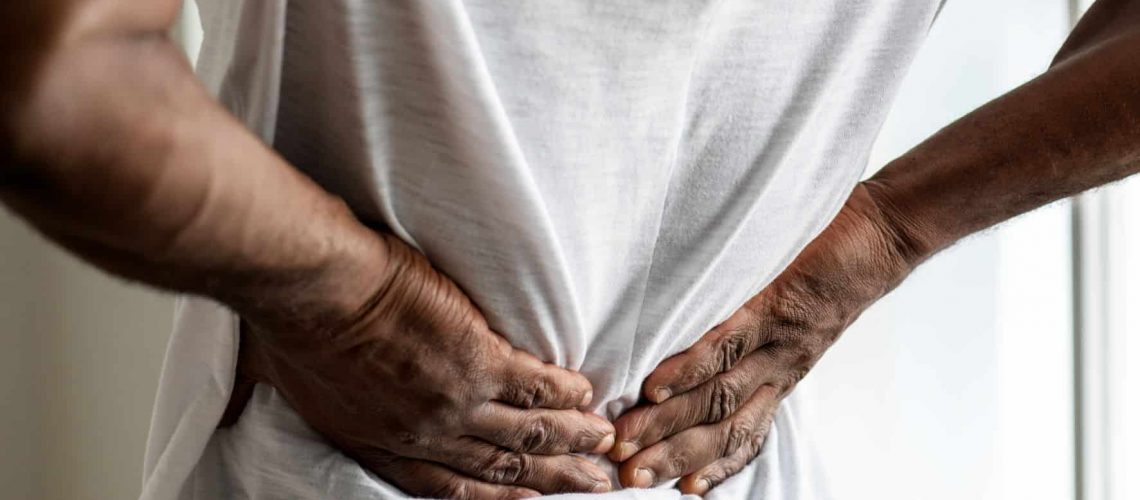The lumbar section of the human spine has numerous vital functions. These functions include movement (e.g., bending, extending, rotating at the waist), structural support, and protecting the soft tissues found within the nervous system and its nearby organs. Additionally, the lumbar spine must support the weight of the upper body.
When there is an injury to this part of the back, pain can range significantly in intensity from dull and achy to excruciating, piercing pain. This feeling is typically detected when the body is in an upright position, or involved in various movements. Once this pain is experienced, it is essential to treat it immediately and adequately, as it plays a vital role in everyday life, and can be an indication of other, more serious health concerns.
One of the first steps in treating this type of pain lies in understanding it. Unfortunately, this isn’t as simple as it may sound. There are several things at play here, which may not be as obvious to the untrained eye. Here, we will discuss some of the things that you need to look out for if you are experiencing lower back pain, to prevent lasting damage, and to achieve a pain-free resolution as quickly as possible.
Contents
Understanding Lumbar Pain
In the same way as there can be many causes of pain, there are an equal number of ways in which doctors can approach it and treat it. Determining the correct treatment protocol begins with diagnosing what is actually causing the problem in the first place.
Diagnosing Lumbar Pain
The first step in diagnosing lumbar pain is a review of your complete medical history. A thorough physical examination is also conducted to determine the exact location of the pain, and if this pain affects your range of motion. Sometimes it is also essential to test the nerves to see if they too are being affected.
Typically, doctors will monitor you for a few weeks when the symptoms are still manageable and they are not resulting in neurological loss. However, if there are concerns over a lack of bowel control, weakness, fever, or weight loss may present, further testing will need to be conducted to determine the root cause.
Further testing will include X-rays, CT scans, ultrasounds, and MRIs. These tests are used in checking for problems with bones, discs, ligaments, and tendons in the affected area. When the strength of the bones is in question , a bone scan or bone density test is also conducted.
Causes of Lumbar Pain
Once test results are returned, it is essential to examine them closely to determine the cause. The root cause of the pain is essential as it highlights what type of treatment is appropriate. Some of the most common causes of lumbar pain include:
- Strains to the muscles and ligaments due to excess activity
- Disc injury where the discs in this region tear or herniate
- Sciatica typically accompanies a herniated disc when the disc is pressing on the sciatic nerve
- Spinal stenosis is the narrowing of the spinal column resulting in added pressure to the lumbar spine
- Pressure on the spinal nerves resulting in numbness, cramping, or weakness in any region of your body
- Abnormal spine curvatures, including scoliosis and kyphosis
- Muscle strain and weakness
- Pinched nerves
- Spinal cord misalignment
Treating Lumbar Pain
Once there is a diagnosis, the correct treatment can begin. Depending on what the diagnosis is, doctors can embrace a number of treatment protocols. These can include:
- Medications including muscle relaxants, nonsteroidal anti-inflammatory drugs (NSAIDs), narcotic drugs (e.g., codeine), steroids, corticosteroid injections
- Physical therapy including massage, stretching, strengthening exercises, back, and spinal manipulation
A Brief Word Regarding Surgery
When the issue with the lumbar spine is severe, surgery may be necessary. However, all other treatment protocols are typically exhausted before surgery is suggested. The only times surgery is considered an emergency intervention is when there is loss of bladder or bowel control, or progressive neurological loss presents in a patient.
There are a few different types of surgery that are performed on the lumbar spine. These include:
- A discectomy relieves pressure on a nerve root that’s affected by a bulging disc or bone spur.
- A foraminotomy to open the foramen (the bony hole in the spinal canal where the nerve’s root is located).
- Intradiscal electrothermal therapy (IDET) reduces a bulging disc and the surrounding nerves’ irritation.
- A nucleoplasty removes the inner material from a disc before heating and shrinking the surrounding tissue.
- A spinal ablation (a.k.a. radiofrequency lesioning) uses radio waves to interrupt how nerves communicate with one another.
- A spinal fusion makes the spine stronger by removing discs and fusing the vertebrae.
- A spinal laminectomy (a.k.a. spinal decompression) enlarges the spinal canal to relieve spinal cord and nerves pressure.
Get the Treatment You Need
Whenever these symptoms present, it is crucial to seek medical help as soon as possible, and we at Thunder Basin Orthopaedics would be delighted to help you
At Thunder Basin Orthopaedics, we specialize in orthopedic surgery and sports medicine. We are based in Gillette, WY, and we have been serving the community in Gillette and Douglas, as well as the surrounding areas for many years. Our highly experienced surgeons and staff are here to help you with all of your orthopedic concerns.
Don’t suffer in silence any longer. Please contact us today to book an appointment and start your journey toward healing and recovery.


